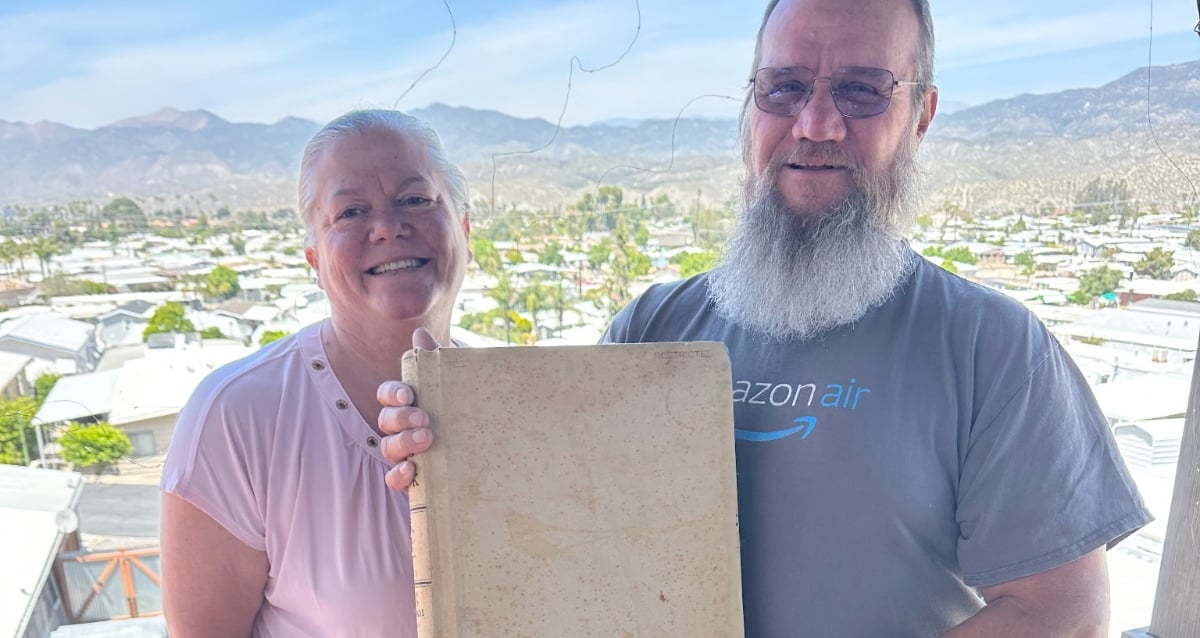California Man Unearths Hidden Pearl Harbor Logbook, Unearthing Untold Secrets From History
Imagine stumbling upon a time capsule tucked away in a dusty trash bin—except this one holds over 500 pages of raw, unfiltered history from the Pearl Harbor Navy Yard, chronicling happenings from March 1941 through June 1942. Now, what are the odds a seemingly forgotten logbook, detailing everything from daily ship movements to the very moments of the Dec. 7, 1941, attack, would resurface after half a century? Thanks to a sharp-eyed California couple and a rare mix of curiosity and luck, this priceless artifact narrowly escaped oblivion—and no, they didn’t walk away with a fortune, just a couple of National Archives t-shirts. But here’s the kicker: this book doesn’t just recount history; it might just rewrite parts of it. Intrigued? You should be.
The National Archives has since recovered the book, which contains more than 500 pages of daily logs from the Pearl Harbor Navy Yard between March 1941 and June 1942.

National ArchivesPages from the logbook detailing the attack on Pearl Harbor.
The National Archives recently announced the recovery of a rare Navy logbook detailing the attack on Pearl Harbor as it was happening. After sitting in storage for 50 years, the volume is now available to the American public.
The logbook — covering the period between March 1941 and June 1942 — records daily entries from the Pearl Harbor Navy Yard, including vessel movements, ships undergoing repairs, and other operational details. Most notably, though, it also includes meticulous contemporaneous notes of the Japanese attack on Dec. 7, 1941, a lesser-known secondary attack on March 4, 1942 (Operation K), and the repair of the USS Yorktown following the Battle of the Coral Sea.
In a press statement, Jim Byron, Senior Advisor to the Acting Archivist, thanked the “historically-conscious California couple” for returning the logbook to the American people. Still, there was a very real possibility that this valuable piece of history may have been lost to time if not for one woman’s decision 50 years ago.
The Pearl Harbor Logbook Was Nearly Trashed Decades Ago
As The Washington Post reported, this book nearly vanished into oblivion. During the 1970s, a woman named Oretta Kanady was working as a civilian employee at the old Norton Air Force Base in San Bernardino, California, and noticed the logbook in a trash bin. She happened to think it looked interesting and asked if she could keep it, according to her son, Michael William Bonds.
“They said, ‘Yeah, go ahead,’” Bonds said. “She brought it home to me. I was like 15 or so. I’ve had it ever since.”
Over the years, Bonds didn’t think much of the book. It sat among his collection until recently, when his fiancée, Tracylyn Sharrit, found it during a move. Sharrit recognized the historical value of the book and decided to reach out to a rare bookseller to see if it had any monetary value.

National ArchivesAn entry written on Dec. 7, 1941, reads: “At 0657 unknown submarine (Japanese) attacked — was attacked and sunk near entrance. At 0755 Japanese aircraft and submarines attacked Pearl Harbor and other military and naval objectives on Oahu.”
The man they contacted was Dan Whitmore, the founder of the Pasadena-based Whitmore Rare Books. Although his shop normally deals in literary first editions or books on philosophy, science, and economics, Whitmore said the logbook was a “significant cultural object,” and it got his attention. Still, he wasn’t certain how much it would be worth.
“I don’t know exactly what a retail price point would be for it,” Whitmore said. “It could be a six-figure object.”
No Compensation For The Couple
There was also concern that, despite nearly being trashed, the book was still technically government property. To clarify the legality of buying and selling the book, Whitmore reached out to the National Archives.
“We didn’t want to buy a problem or buy a headache and we certainly didn’t want to pass on a headache to potential customers,” Whitmore explained. “We wanted to make sure that the National Archives didn’t have a claim on it.”
As it turned out, officials from the National Archives did indeed consider the book to be government property, despite the fact that Kanady had rescued it from the trash. Therefore, Bonds was asked to hand it over.
In return, he was gifted two National Archives t-shirts.

Public DomainThe explosion of the USS Shaw during the attack on Pearl Harbor.
“I’d like to have gotten some compensation for it,” Bonds said. “All I got was a t-shirt so far.”
Bonds noted that arrangements were also being made for him and his fiancée to tour the San Diego Navy base.
The National Archives has cataloged the logbook and made it available to researchers and the public. Digital facsimiles of key sections — particularly entries for December 6 to 8, 1941 — are now viewable online.
Archivists are planning conservation work to ensure the physical artifact is preserved. Moving forward, historians will study its entries in relation to other Pearl Harbor documentation, such as deck logs, reports, and dispatches. The logbook may help resolve debates over timing, command communications, and the extent of readiness prior to the attack.



















